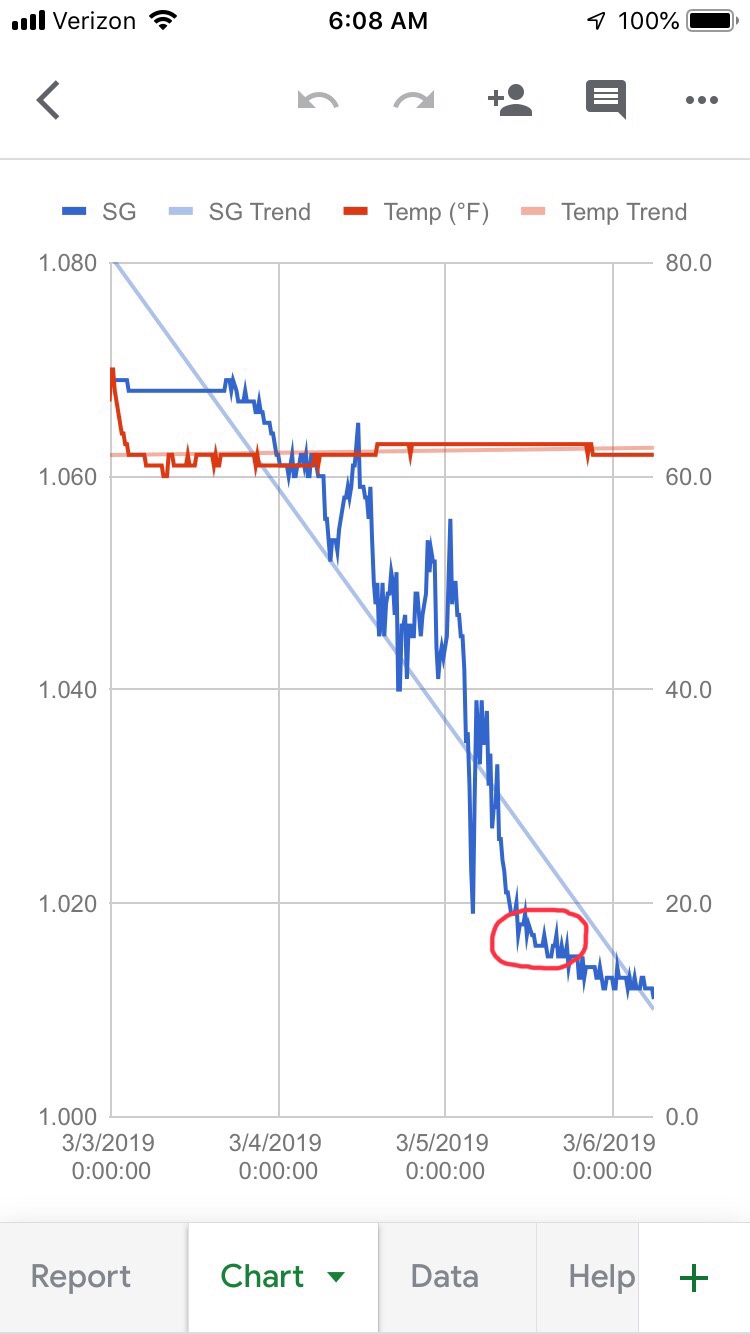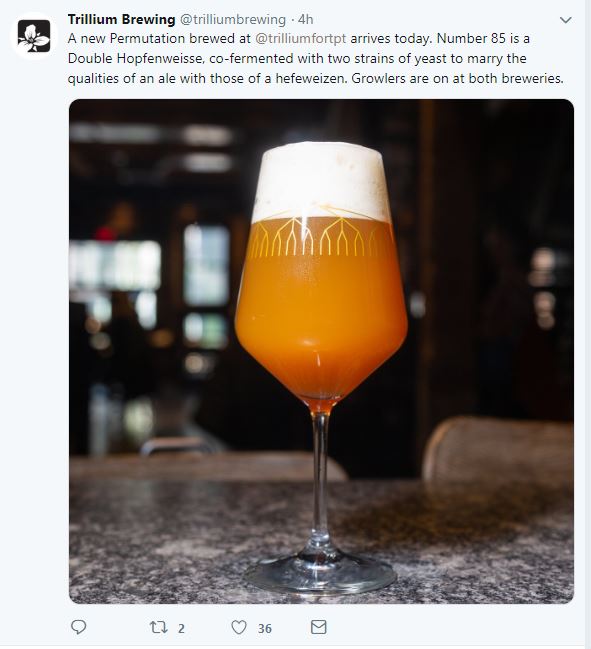isomerization
Well-Known Member
- Joined
- Feb 27, 2017
- Messages
- 1,422
- Reaction score
- 889
I’d like to hear about it.
Would be interested about using it to time spunding instead of taking a sample.
I attached a typical looking “tilt-gram”, just using google sheets, the Tilt exports if you maintain a WiFi connection.
Absolute values may not perfectly match as the Tilt can accumulate junk on it, throwing it off a bit. Within a point or 2 though.
For dry hopping, I like seeing an inflection in the ferm profile (for example between 3/27 and 3/28 in attached pic). This lets you know that fermentation is winding down. Perhaps that’s enough for you to know to rack/spund?
I find it also helps me (manually) regulate temps in my ferm chamber (don’t typically use a thermowell). Also provides peace of mind with slower fermentations. I had a recent issue where a Begian Quad spit up a ton of yeast/krausen and then took 12 days to finish, I could see that gravity dropping was still occurring all the way through.







